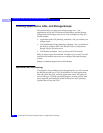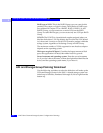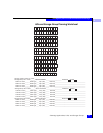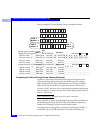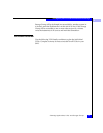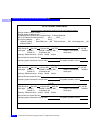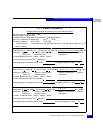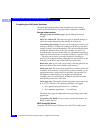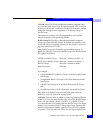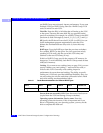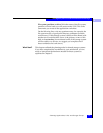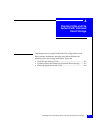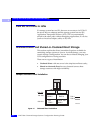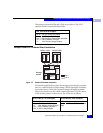
3
3-14
EMC Fibre Channel Storage-System Configuration Planning
Planning File Systems and LUNs with Shared Switched Storage
Completing the LUN Details Worksheet
Complete the header portion of the worksheet for each storage
system as described below. Copy the blank worksheet as needed.
Storage-system entries
Storage-system installation type, specify Shared Switched
storage.
SP FC-AL address ID. This does not apply to shared storage, in
which the switch determines the address of each device.
Use memory for caching. You can use SP memory for read/write
caching or RAID 3. (Using both caching and RAID 3 in the same
storage system is not recommended.) You can use different cache
settings for different times of day (for example, for user I/O
during the day, use more write cache; for sequential batch jobs at
night, use more read cache. You enable caching for specific LUNs
— allowing you to tailor your cache resources according to
priority. If you choose caching, check the box and continue to the
next step; for RAID 3, skip to the RAID Group ID entry.
Read cache size. If you want a read cache, it should generally be
about one third of the total available cache memory.
Write cache size. The write cache should be two thirds of the total
available. Some memory is required for system overhead, so you
cannot determine a precise figure at this time. For example, for
256 Mbytes of total memory, you might have 240 Mbytes
available, and you would specify 80 Mbytes for the read cache
and 160 Mbytes for the write cache.
Cache page size. This applies to both read and write caches. It can
be 2, 4, 8, or 16 Kbytes. As a general guideline, we suggest
• For a general-purpose file server — 8 Kbytes
• For a database application — 2 or 4 Kbytes
The ideal cache page size depends on the operating system and
application.
Use memory for RAID 3. If you want to use the SP memory for
RAID 3, check the box.
RAID Group/LUN Entries
Complete a RAID Group/LUN entry for each LUN and hot spare.



